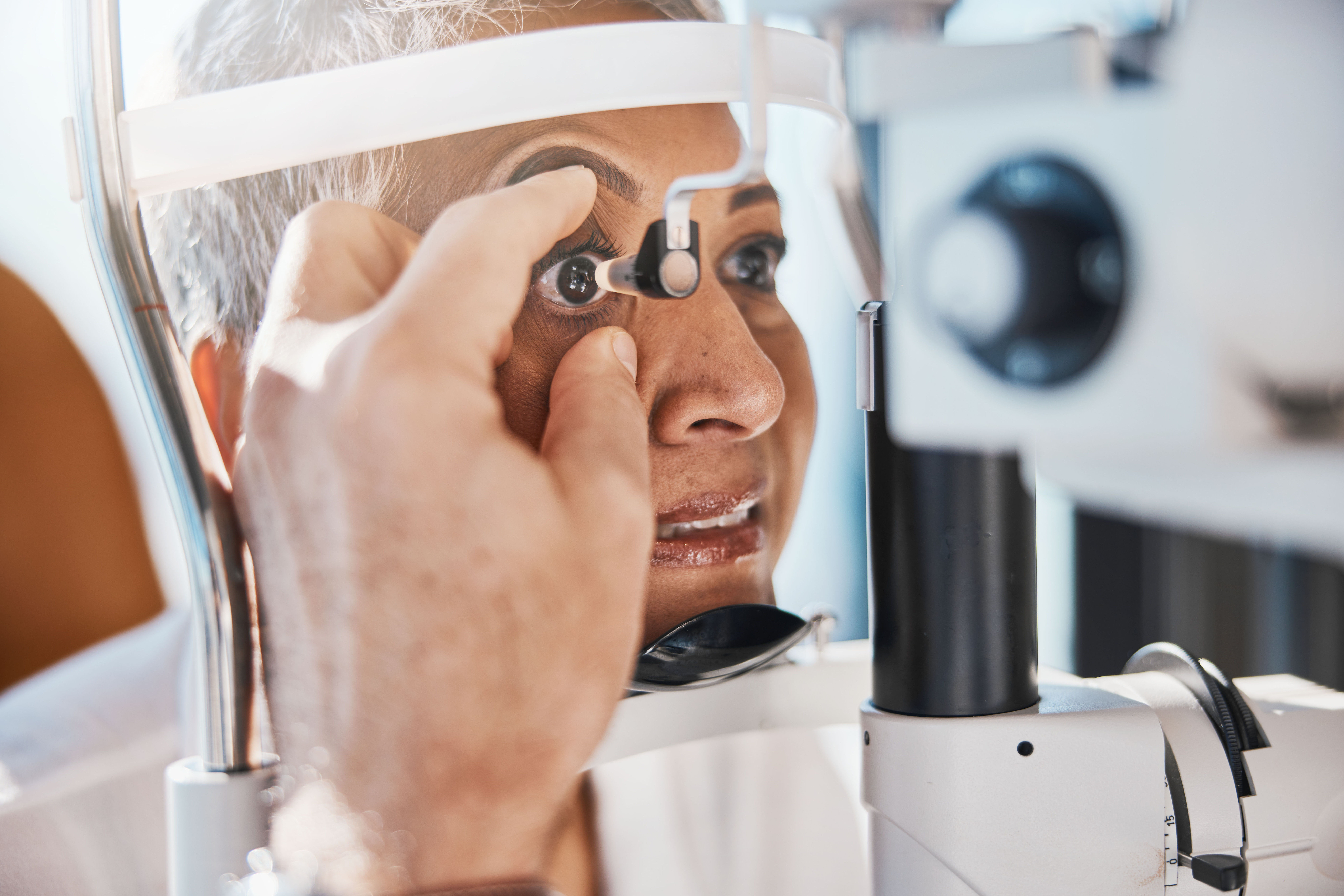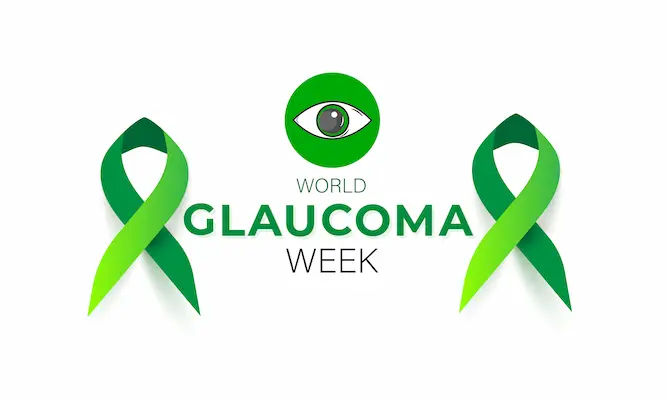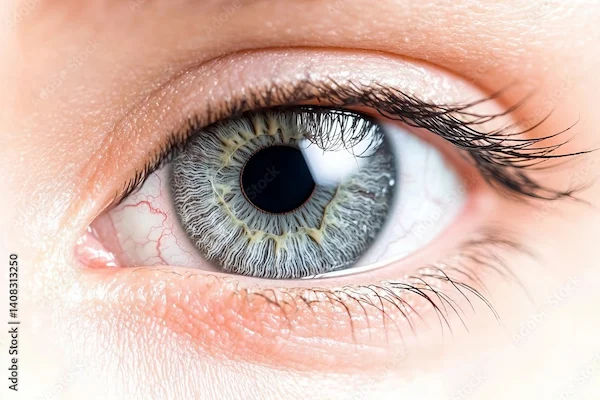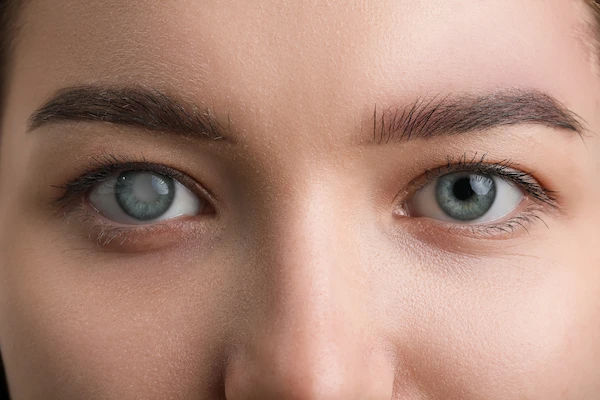Glaucoma Diagnosis: Recognising Signs and Causes
Know about glaucoma, what it is, causes, recognising signs and symptoms, diagnosis, prevention and treatment options.

Written by Dr. Dhankecha Mayank Dineshbhai
Reviewed by Dr. J T Hema Pratima MBBS
Last updated on 12th Sep, 2025

Introduction
Glaucoma is often called the "silent thief of sight" for a sinister reason: it can steal your vision gradually and painlessly, without any early warning signs. This group of eye diseases damages the optic nerve, the vital cable that transmits visual information from your eye to your brain. Many people are unaware they have glaucoma until their sight is significantly impaired, making proactive knowledge and regular check-ups absolutely critical. This article will demystify the causes and risk factors behind glaucoma, guide you through its often-subtle signs, and explain the comprehensive diagnostic process ophthalmologists use to detect it.
What Exactly is Glaucoma?
Glaucoma is not a single disease but a group of eye conditions that result in progressive damage to the optic nerve. This nerve is essential for good vision, as it acts like a data cable carrying images from the eye to the brain. The most common type of glaucoma is associated with a buildup of pressure inside the eye, known as intraocular pressure (IOP). This pressure can damage the optic nerve fibres, leading to blind spots in the visual field. If the entire nerve is destroyed, it results in complete blindness. It's a leading cause of irreversible blindness worldwide, but its progression can almost always be halted or slowed with early glaucoma detection and treatment.
The Primary Culprit: What Leads to Glaucoma?
The underlying cause of most glaucoma cases is a failure of the eye's internal drainage system. Inside the eye, a clear fluid called aqueous humour circulates to nourish nearby tissues. This fluid flows out through a tiny, mesh-like channel called the trabecular meshwork. If this drainage channel becomes blocked or inefficient, fluid builds up, causing intraocular pressure to rise. This elevated IOP is the most significant risk factor for optic nerve damage. However, in a condition called normal-tension glaucoma, the optic nerve is damaged even though eye pressure is within the normal range. This suggests that other factors, like reduced blood flow to the optic nerve or a fragile nerve structure, are also at play.
Consult an Ophthalmologist for Personalised Advice
Key Risk Factors for Developing Glaucoma
While high eye pressure is a major contributor, several other factors can increase your susceptibility to developing glaucoma.
These glaucoma risk factors include:
- Age: People over 60 are at significantly higher risk, and the risk increases with each decade.
- Ethnicity: Individuals of African, Asian, and Hispanic descent are at increased risk. Specifically, people of African ancestry are more likely to develop glaucoma at a younger age and with greater severity.
- Family History: Having a parent or sibling with glaucoma increases your risk, pointing to a possible genetic link.
- Medical Conditions: Diabetes, heart disease, high blood pressure, and sickle cell anaemia can contribute to risk.
- Other Eye Factors: Severe eye injury, certain eye surgeries, extreme nearsightedness or farsightedness, and thin corneas can all be contributing factors.
- Prolonged Corticosteroid Use: Long-term use of corticosteroid medications, especially eye drops, can elevate eye pressure.
Recognising the Signs: Symptoms of Glaucoma
The symptoms of glaucoma vary dramatically depending on the type and stage of the condition. This is why understanding the differences is crucial.
Open-Angle Glaucoma Symptoms
This is the most common form, accounting for at least 90% of all cases. The "open angle" refers to the drainage angle where the iris and cornea meet, being wide open, but the drainage channels are partially blocked.
The onset is insidious:
- In the early stages, there are typically no symptoms. No pain, no vision changes.
- As the disease progresses, the first sign is usually the loss of peripheral (side) vision. This loss is so gradual that a person may compensate by turning their head unconsciously, often not noticing the change until the damage is significant.
- If untreated, the field of vision narrows further, creating "tunnel vision," eventually leading to total blindness.
Angle-Closure Glaucoma Symptoms
This less common form occurs when the iris bulges forward, suddenly blocking the drainage
angle. It is a medical emergency that requires immediate treatment to prevent blindness.
The signs are acute and severe:
- Suddenintense eye pain
- Severe headache
- Blurred vision or halos around lights
- Eye redness
- Nausea and vomiting
If you experience these symptoms of acute glaucoma, seek emergency medical care immediately.
Normal-Tension and Congenital Glaucoma
- Normal-Tension Glaucoma: As mentioned, it has no pain and gradual peripheral vision loss despite normal IOP.
- Congenital Glaucoma: Present at birth, symptoms in infants include cloudy eyes, excessive tearing, sensitivity to light, and unusual eye movements.
How Glaucoma is Diagnosed: The Comprehensive Eye Exam
A glaucoma diagnosis cannot be made based on symptoms alone. It requires a comprehensive, painless eye examination performed by an optometrist or ophthalmologist. This exam involves several key tests designed to paint a complete picture of your eye health.
Measuring Intraocular Pressure (Tonometry)
This test measures your inner eye pressure. The most common method is the "air puff" test (non-contact tonometry), where a brief puff of air flattens your cornea. A more accurate method (applanation tonometry) involves a tiny device gently touching the eye's surface after it has been numbed with drops. This is a crucial first step in testing for glaucoma.
Inspecting the Drainage Angle (Gonioscopy)
This test helps determine whether the drainage angle is open or closed. After numbing the eye, a special handheld contact lens with mirrors is placed gently on the eye. This allows the doctor to see if the angle where the iris meets the cornea is clear or blocked, which is essential for identifying the type of glaucoma.
Evaluating the Optic Nerve (Ophthalmoscopy)
This is a fundamental part of the exam. The doctor will dilate your pupils using special eye drops and then use a magnifying device with a light to look directly at the optic nerve at the back of your eye. They are checking for signs of damage, such as increased cupping (a larger pale area in the centre of the nerve) or changes in its colour. Early glaucoma detection often hinges on spotting subtle changes here over time.
Testing the Visual Field (Perimetry)
This test maps your complete field of vision to check for areas of vision loss. You will be asked to look straight ahead into a machine and press a button whenever you see a light spot appear in your peripheral vision. The results create a map that shows any blind spots or patterns of vision loss characteristic of glaucoma.
Measuring Corneal Thickness (Pachymetry)
The thickness of your cornea can influence your eye pressure reading. A thick cornea can give a falsely high reading, while a thin cornea can give a falsely low one. This simple test, which involves a small probe gently touching the front of the eye to measure its thickness, provides critical context for your tonometry results.
Living with Glaucoma: Prognosis and Next Steps
Receiving a glaucoma diagnosis can be unsettling, but it is a highly manageable condition. The primary goal of treatment—usually medicated eye drops, laser therapy, or surgery—is to lower intraocular pressure to a level that will prevent further damage to the optic nerve. While vision already lost cannot be restored, treatment can almost always halt or drastically slow the progression of the disease, preserving your remaining vision. Successful management requires a lifelong partnership with your eye care professional, including regular follow-up appointments to monitor pressure and the health of your optic nerve. If you are diagnosed with glaucoma, it is crucial to follow your prescribed treatment plan meticulously and attend all scheduled check-ups. For ongoing management and convenient consultations, you can connect with a specialist online through Apollo24|7.
Conclusion
Glaucoma is a pervasive and potentially blinding disease, but its narrative is not one of inevitability. The power to change the outcome lies in awareness and proactive care. Understanding the risk factors—age, family history, ethnicity—empowers you to assess your own vulnerability. Recognising that the most common form has no early symptoms underscores the non-negotiable importance of regular comprehensive eye exams. These exams are the only tool capable of catching glaucoma in its tracks, long before it robs you of your sight. Do not wait for symptoms to appear; by then, irreversible damage may have already occurred.
Consult an Ophthalmologist for Personalised Advice
Consult an Ophthalmologist for Personalised Advice

Dr Rajesh Rastogi
Ophthalmologist
33 Years • MBBS, MS Ophthalmology
New Delhi
Rotary Diabetic Centre, New Delhi
Dr. Padmini S
Ophthalmologist
4 Years • MBBS,MS
Bengaluru
Apollo Medical Center, Marathahalli, Bengaluru
Dr. V.chittibabu
Ophthalmologist
30 Years • MBBS, MS
Vellore
Krupa Eye Clinic, Vellore

Dr L R Seth
Ophthalmologist
36 Years • MBBS, MS, DOMS
Delhi
Apollo Hospitals Indraprastha, Delhi
Dr. Akashdipta Saha
Ophthalmologist
4 Years • MBBS, MD(Ophthalmology), Fellowship in Retina & Vitreous
Delhi
AIIMS, Delhi
Consult an Ophthalmologist for Personalised Advice

Dr Rajesh Rastogi
Ophthalmologist
33 Years • MBBS, MS Ophthalmology
New Delhi
Rotary Diabetic Centre, New Delhi
Dr. Padmini S
Ophthalmologist
4 Years • MBBS,MS
Bengaluru
Apollo Medical Center, Marathahalli, Bengaluru
Dr. V.chittibabu
Ophthalmologist
30 Years • MBBS, MS
Vellore
Krupa Eye Clinic, Vellore

Dr L R Seth
Ophthalmologist
36 Years • MBBS, MS, DOMS
Delhi
Apollo Hospitals Indraprastha, Delhi
Dr. Akashdipta Saha
Ophthalmologist
4 Years • MBBS, MD(Ophthalmology), Fellowship in Retina & Vitreous
Delhi
AIIMS, Delhi
More articles from Glaucoma
Frequently Asked Questions
Can you have glaucoma with normal eye pressure?
Yes, this condition is called normal-tension glaucoma. It confirms that factors beyond just pressure, like poor blood flow to the optic nerve, can cause damage. Diagnosis requires a comprehensive exam to assess the optic nerve and visual field.
How often should I be screened for glaucoma?
The American Academy of Ophthalmology recommends a comprehensive eye exam every 2-4 years for adults aged 40-54, every 1-3 years for adults 55-64, and every 1-2 years for adults 65 and older. If you have high-risk factors, your doctor will recommend more frequent screenings.
Is vision loss from glaucoma reversible?
No, unfortunately, any vision loss caused by glaucoma is permanent and cannot be reversed. This is why early detection and treatment to prevent further loss are so critical.
What is the main goal of glaucoma treatment?
The sole goal of all glaucoma treatments—whether eye drops, laser, or surgery—is to lower intraocular pressure to a specific target level that will stop or slow down further damage to the optic nerve and preserve your existing vision.
Can glaucoma be cured?
There is currently no cure for glaucoma. It is a chronic, lifelong condition that requires continuous management and monitoring to control eye pressure and prevent vision loss.




